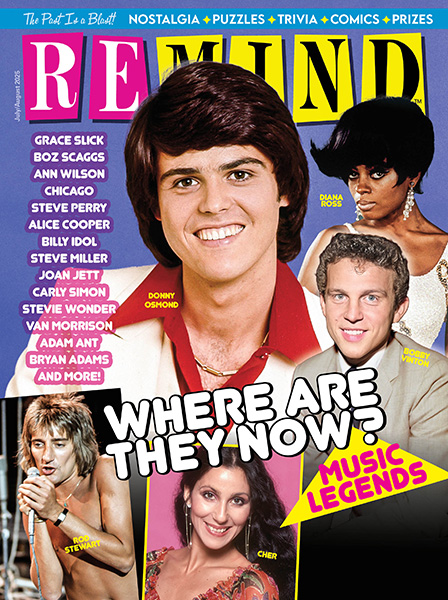‘The Black Cauldron’ Turns 40: Inside the Forgotten Disney Film That Was Deemed ‘Too Scary’

Disney, along with most of Hollywood, is obsessed with nostalgia: much of their recent output has been comprised of sequels or live-action remakes of their most beloved films, from Lilo & Stitch earlier this year to Toy Story 5 on the horizon. But one movie in their catalogue was such a major flop, they’d rather forget it exists at all: 1985’s dark animated fantasy The Black Cauldron, directed by Ted Berman and Richard Rich. 40 years later, isn’t it time we give this forgotten animated flick a second chance?
The 1980s were a rough time for the House of Mouse. The legendary “Nine Old Men” animators started to retire in the 1970s, with young animators still cutting their teeth on The Rescuers and The Fox and the Hound. Some of those new artists weren’t satisfied by the films in the company had in production, and in 1979, Don Bluth and others quit to start their own animation studio, achieving great success with An American Tail and The Land Before Time. Suddenly, Disney cartoons had competition at the box office.

(c)Buena Vista Pictures/courtesy Everett Collection
Disney was also going through an identity crisis. In an effort to pivot away from squeaky-clean projects like The Shaggy D.A. and Freaky Friday and bring in the older teen audience, they attempted to rebrand with darker, more mature projects. This led to creepy live-action nightmares like Something Wicked This Way Comes and The Watcher in the Woods — which have developed cult followings today, but were major financial disappointments at the time.
And by that point, The Black Cauldron was already in production.
Based on the book series by Lloyd Alexander and inspired by Welsh mythology, The Black Cauldron is a fairy tale about Taran, a heroic boy with a magical pig, who must team up with a princess to save the world from an evil king. Seems right at home alongside Snow White and Sleeping Beauty at first glance.
But while it does have some humor (thanks to the adorable furry sidekick Gurgi), this is a much heavier film than previous Disney fairy tales. The Horned King is much more menacing than even Maleficent, and he raises a literal army of the dead. And in the climax of the film, Gurgi sacrifices himself to save everyone. Not Gurgi, the lovable comic relief! Yes, he ultimately survives, but kids were still traumatized.
With gorgeous animation filmed on 70mm (the first Disney film to do so since 1959’s Sleeping Beauty), The Black Cauldron exemplifies the best of Disney craftsmanship. Unfortunately, behind the scenes, the film was rife with issues. Clashing opinions lead to constant staff changes, which lead to rewrites and scrapped animation, causing the budget to balloon to a rumored $44 million. Test screenings did not go well, with viewers deeming it too scary and too long. New producer Jeffrey Katzenberg insisted on changes and cuts, delaying the release from December 1984 to July 1985.
Unhappy with the cost and the results, Disney was certainly less than enthusiastic about the release. It would go on to only gross $21 million, the biggest monetary misfire in Disney history until 2004’s Treasure Planet, another criminally underrated animated film. Critics were also mixed on the film, with many dismissing it as old-fashioned and outdated, though Roger Ebert gave it a rave review, calling it a “return to the tradition” of the “strength and utter storytelling conviction of the early Disney animators.”

(c)Buena Vista Pictures/courtesy Everett Collection
Ultimately, it feels like the film just got caught in the middle of massive changes at Disney, becoming the whipping boy for all the frustrations and disagreements. The old guard was leaving, the new guard was upset with the current direction, and the only thing they agreed on was that they weren’t happy with The Black Cauldron.
In 1989, Disney’s frowns turned to smiles with the release of mega-hit The Little Mermaid, and the “Disney Renaissance” was born. And while the success and beloved status of Ariel, Aladdin and others from that era is undeniable, I wish we would take a kinder look at the pre-renaissance films, from the streetwise dogs of Oliver and Company to the mystery-solving rodents of The Great Mouse Detective. Disney quickly moved on from The Black Cauldron and didn’t look back. They waited 13 years to release in on VHS in 1998, and even now, the only Blu-ray release of the film was part of the Disney Movie Club, which ended in 2024.
Sadly, there are now generations of kids who possibly missed this film growing up, simply because it wasn’t part of the “Disney Canon” that was most heavily promoted. Is it too late to save this film from obscurity? I’d say now is the perfect time to re-introduce The Black Cauldron to audiences.

©Walt Disney Co./courtesy Everett Collection
Darker, more mature animation is more popular than ever, thanks to the explosion of Japanese anime, where bloody tales of fighting monsters and demons are mainstream hits. Guillermo del Toro‘s Pinocchio retold the famous puppet story in fascist 1930s Italy, and it still won the Oscar for Best Animated Feature. Today’s audiences can handle The Black Cauldron, no matter how terrifying the Horned King is.
I’m not saying we need a live-action remake or a sequel, but I would still love to see The Black Cauldron get some overdue recognition in this day and age. A theatrical re-release? 4K Blu-Ray edition? I’d settle for a character meet-and-greet at Disneyland.

Where Are They Now? Music Legends
July/August 2025
They rocked and rolled us, they shredded, they head-slammed and they crooned, but what happened to them and where are they now?
Buy This Issue